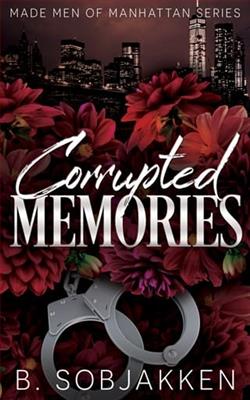Page 32 of The House of Cross
John put the call on speaker and identified himself and then Bree. When they told him they were running down some loose ends that had made them interested in the old Wheeler case, the former detective said he remembered it all like yesterday.
“Rural Idaho, you just don’t see that kind of thing,” Oakes said. “Double homicide like that. No DNA. No weapon. No motive. No likely suspects.”
“We understand the sons were hysterical,” Bree said.
“Pitiful state,” Oakes said. “Those kids adored their parents. Ryan sobbed for days. Sean went catatonic but refused to leave his brother’s side. Maybe I would have done the same thing if those rumors were true, that they’d been adopted twice.”
“What?” Sampson and Bree said.
“Yeah, Patricia couldn’t have kids. The Wheelers adopted Ryan and Sean when they were infants. Private, black-market kind of thing. We didn’t find that out until years later.”
CHAPTER 23
San Francisco, California
WE CROSSED GROVE STREETand talked with people living in the small tent city at the corner of the opera house. They all said last night it had been raining so hard, they were hunkered down in their shelters, and they saw no one who matched the description, though one woman offered that the locs-peasant-skirt-and-Uggs look was common locally.
The two young San Francisco PD detectives, Audrey Bell and Jorge Ponce, had better luck looking through footage from a CCTV camera at Van Ness and Grove; it backed up Clark’s version of events the night before. They met us in the symphony hall lobby, and we watched the footage on Ned’s iPad.
The feed was grainy due to the low light and the downpour, but we could clearly see Judge Pak with his 49ers umbrella walking past the tent encampment and being followed down the street by a Caucasian female with a mop of long locs. She movedwith her head down, as if she were aware of the cameras and didn’t want people to get a good look at her face.
Leo Carson, the security chief at the symphony hall, finally showed up at eleven, irritated that he’d been called in on his first day off in a month.
“You got a time frame?” he asked testily.
Hinkley said, “Lose the attitude and rewind us to nine thirty-five last night.”
Carson did and we watched an empty, rain-splattered sidewalk until Judge Pak appeared walking down Franklin Street, his back and the top of his umbrella to the camera as he ambled toward his favorite ramen shop. The woman appeared a few seconds later. With her back to the camera, she pulled her hood over her locs, eased something from her sleeve, and stalked in fast behind Pak.
The attack was brutal, precise, swift. The first thrust of the knife—which looked like a KA-BAR straightedge, the kind used by Marines—went through his raincoat and suit coat and deep into his right kidney, a devastating wound. She removed the knife, stuck it in his other kidney, and twisted the blade.
Pak went rigid, up on his toes; she yanked the knife free, and the air and life went right out of him. She strolled off, stuck the blade back in her sleeve, and then pushed against the left side of her neck.
“She’s a pro,” Mahoney said.
I nodded. “She knows damaging the kidney causes immediate systemic shock.”
Hinkley nodded. “Also, see how much smaller she is than Pak? She needed to target him there or risk him fighting.”
Mahoney looked at the homicide detectives. “Can you follow her on CCTV? Figure out where she went and see if we get a better look at her?”
Ponce nodded.
Bell said, “We’ll get it all if we can.”
After the detectives left, Hinkley checked her watch. “I have to vanish here for a couple of hours. Parent-teacher conference for my son, who is having challenges.”
“Go,” Mahoney said. “You have a home address for Pak?”
“Coming at you,” she said, typing a text on her phone. “And I had Bell and Ponce seal the place early this morning. You’ll get first look.” She handed us a set of keys that she said were taken off Pak’s body.
It turned out that the judge’s house was one of the famous Painted Ladies Victorian homes on Alamo Square, a short walk from the symphony hall. As promised, police tape sealed the front door.
Ned and I put on booties, gloves, and hairnets, broke the seals, and used Pak’s keys to get inside. The home decor was modern and precisely arranged.
There were hardly any pictures on the walls but plenty of places where there were hooks or nails hanging. We later found a crate in the basement filled with framed photographs of Pak with his late wife, Leigh.
The kitchen and bathrooms smelled of bleach. The rugs were all freshly vacuumed. Someone had scrubbed the house before the seal was put in place.















